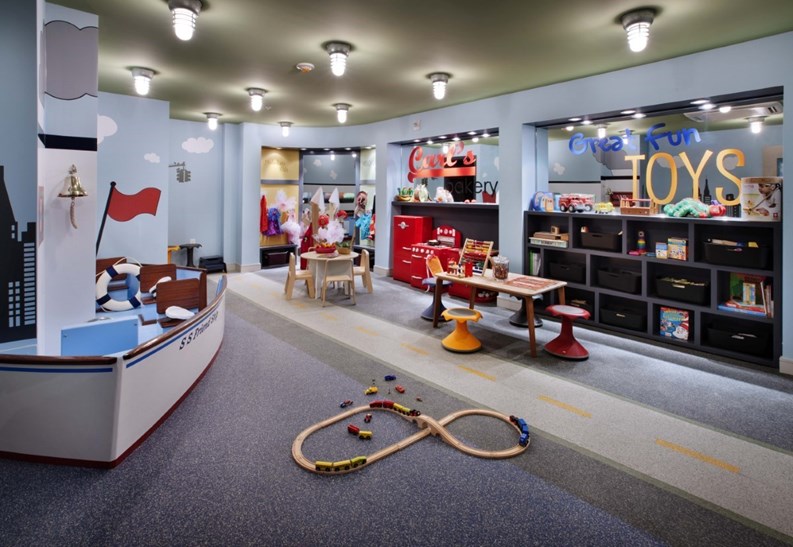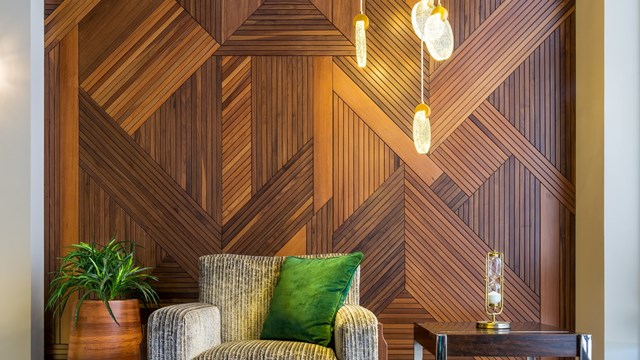You’ve got the perfect couple looking into buying a condo in your building. And they love everything about the unit.
But here’s the catch—they also love everything about another building’s unit. They can’t decide which to buy.
Then they notice the gym in your building. It has everything they pay for at their private gym, which means they could save $150 every month by canceling their gym membership. And even though their unit has all the bells and whistles and the perfect location, it’s that gym that pushed them over the edge and made them take the plunge.
That’s exactly what happened to one couple when they were considering Tempo, a luxury condo building in Kips Bay.
They liked Tempo, but they also equally liked another unit in another building.
The saleswoman showed them the granite countertops, the stainless steel appliances and the hardwood floors. But nowadays, those little luxuries come standard in nearly every new apartment.
Over the Top
So the saleswoman continued on the tour, showing them all the amenities that they’d be able to take advantage of if they were to choose Tempo.
Those extra amenities were what pushed the couple over the edge.
“When they got to the rooftop, it reminded them of where they had their wedding, and they said that was the final straw. It was really cute,” says Deanna Raida, a broker with Prudential Douglas Elliman and an on-site saleswoman at Tempo. “If you’re looking between two buildings, and one has a gym and other doesn’t, it can be a deciding factor.”
Amenities are one of the key factors that draw buyers to one building or HOA over another—if two units are otherwise identical in every regard, the one with the immaculate, Olympic-sized swimming pool, the screening room, or the roof-deck with spectacular ocean views will be the one that ultimately attracts the buyer.
In New York, nearly everyone is looking for amenities that make their life easier, Raida says.
That’s why Tempo added so many perks. Nearly the entire second floor of the building is amenity space, which includes a gym, sauna, treatment room and an outdoor courtyard.
“We’re one of the only buildings that has an outdoor cinema,” she says.
They even have big refrigerators in the lobby area that contain cold storage space—perfect for grocery deliveries or even for lobsters shipped straight from Maine.
“It’s very convenient for residents not to have to worry about that window of time to be home for their food deliveries,” Raida says.
While Tempo went all out with their amenities, other buildings are simply trying to put in the most popular ones so that they can compete. They may not have the budget, the space or the time to add an outdoor cinema or even a sauna adjacent to the gym.
Some of the more popular amenities currently trending in condos and HOAs focus around health and wellness, says Michael Zuchelli, vice president of operations at Elite Pool & Fitness Management, Inc., in Whitestone, New York.
“Condos and like properties that once boasted lap pools and fitness centers, are now seen as customary in the eyes of many amenity seekers,” he says. “Newer trends include in-house spas and wellness services ranging from traditional Swedish or therapeutic deep tissue massage to Reiki and other body treatments that continue to be a growing trend among health enthusiasts.”
Going Virtual
Virtual reality cardio equipment plus new exercise classes such as kettle bells, Zumba and TRX training are also becoming popular features, Zuchelli says.
But while those are gaining in popularity, other amenities are falling out of fashion.
Community rooms are being transformed into entertainment lounges equipped with theater-style seating, and unused roof space is now home to sundecks and garden areas, a respite for tranquility among the hustle and bustle of city living, Zuchelli says.
“Amenities that become timeless, build on the basics and make them spectacular,” he says. “The key to that success is dependent on mastering the appetite of your clientele.”
That’s why the developers and the sales team at Tempo have a roundtable discussion to brainstorm who their clientele are—and what amenities would separate their building from all the others in New York.
They just completed the outdoor courtyard, and are getting an oversized TV that goes behind a glass wall for protection from the weather.
Now, they’re trying to decide how to best use that feature.
“We may do Sunday night at the movies for residents, or they may be able to rent it out, Raida says.
The key, Zuchelli explains, is staying above the competition—a constant task that requires developers to explore what is out there—and to make it better.
“When investing in the amenities of your property, expand on what is popular among other facilities, while leaving behind ideas that have lackluster success in the past,” he says. “The developers that continue to raise the bar, recreate those timeless amenities that have potential buyers dreaming of a massage or relaxing by the pool, before they even move in.”
But since money is tighter these days—and since many residents will think twice before paying the fees that go along with amenities, it’s important for condo owners and developers to think long and hard before putting new perks into their buildings. It’s also important for everyone in the building to agree on which amenities to add.
Strike the Right Balance
The key is to strike the right balance between what amenities are offered and an affordable fee for the demographic buyer pool. If your amenities are too high, they’ll knock out buyers who may have been interested in the building. But if there aren’t enough perks in the building, you may lose some buyers who are looking for a pool or a small movie theater.
There are also some amenities that buildings are adding that don’t cost too much—and may even make money.
Zuchelli suggests adding a fitness center, since—according to a recent study by the Centers for Disease Control and Prevention—47 percent of Americans over the age of 18 engaged in some form of aerobic physical activity.
“More and more Americans are taking a proactive approach when it comes to their health, and there’s nothing like having a fitness center footsteps away from your morning coffee,” he says.
If the fitness center rivals private gyms, you could choose to charge residents a monthly or annual fee to join—an option that’s become very popular in recent years, as buildings spend more money on their gyms.
Fitness centers can become pricey, however, since the building would have to buy treadmills, elliptical machines, weights and televisions—each of which can cost upwards of $500. There’s also the added cost of insurance.
Other options along the same lines would be a room that could be used as a yoga, Pilates or even kickboxing studio. The building’s manager could arrange for an instructor to come in weekly—charging residents who want to participate a nominal fee—and it would be a nice perk to be able to do this without leaving the building.
Or, if the building houses many children, you could use an empty room as a play space. Ask the residents to donate their old toys, put up shelves and a few mats, and you could offer this room to all the families so they don’t have to clutter their apartments with dolls, activity mats and bouncy seats.
Family-friendly amenities are also a selling point at The Aldyn, a deluxe condo building at 60 Riverside Boulevard on the Upper West Side. According to its website, in addition to a club and spa, it also features 40,000 square feet of amenity space geared towards the younger set. It includes a full-size basketball court, a two-lane bowling alley, a golf simulator, a gym, a billiards table, a Ping-Pong table and community cafe. Oh, and don’t forget the cool, two-floor rock-climbing wall.
You could also add storage cages if there’s an unused basement room, and either sell the cages to the unit owners or rent them for $75-100 per month, depending on the size.
Usage is key. If the building can track usage via something as basic as a sign-in sheet, or through electronic monitoring, you’ll know if the amenity is worth keeping, Zuchelli says. Some amenities—such as a pool or even a landscaped patio—take constant maintenance. So if they’re not being used, it’s better to get rid of it instead of continuing to throw away money trying to maintain them.
It’s even better to monitor usage of an amenity prior to installing it in your building. Contact other buildings and ask if you could spend an afternoon in their business center to see who visits the room. If the majority of the people using the business center are older adults—but you’re trying to market your building toward younger people, it’s probably not a great amenity for your building.
If you’ve already put the amenity into your building, only to realize that it’s not being used by many residents, you may want to consider getting rid of the perk. But before you do that, you’ll have to see what’s been written into your specific declaration and bylaws.
Follow the Bylaws
You can’t get rid of the doorman—even if many residents don’t want him anymore—if you’ve promised 24-hour doorman security in your declaration or bylaws.
First, you’d have to have the building’s board vote to change the laws. Then, if and only if that passes, you can get rid of the doorman or any other amenities in question.
Failing to take all necessary measures to legally change the rules to get rid of amenities can land you in court, says Gary Poliakoff, co-author of New Neighborhoods: The Consumer’s Guide to Condominium, Co-op and HOA Living.
But it probably won’t get that far.
“The consequences of amenities being eliminated are unit owner complaints, but few are willing to go into court because if you prevail, it means your maintenance goes up—and few are prepared for that.”
Danielle Braff is a freelance writer and a frequent contributor to The Cooperator.







Comments
Leave a Comment